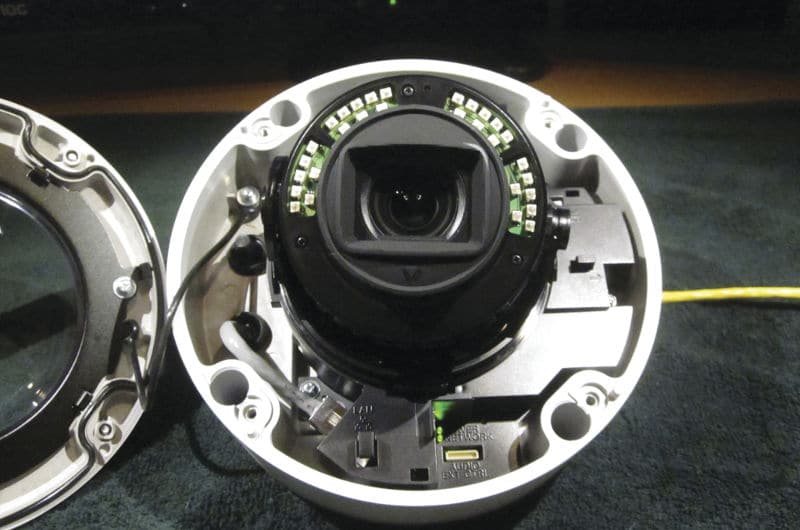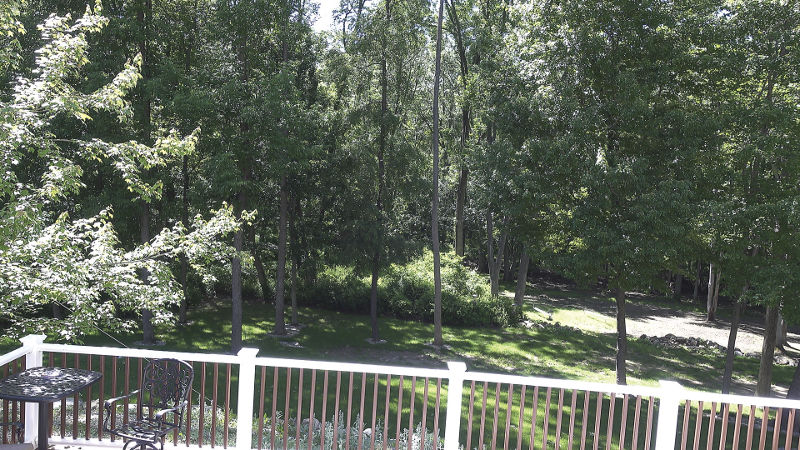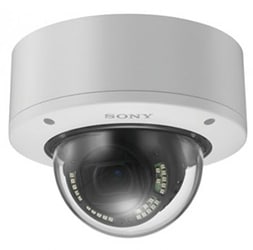SSI put the Sony SNC-VM772R fixed dome camera under the microscope.
SONY has been supplying products to the CCTV industry for many years. Its video surveillance offerings have primarily been based on the IPELA line of CCTV cameras. Sony is now expanding its offerings with two cameras that employ a 4K (20-megapixel) sensor. We will examine one of these cameras, the SNC-VM772R fixed dome.
Construction
The first thing I noticed about this camera when I pulled it out of the box was its size — it is BIG compared to the standard fixed IP domes I have worked with or seen in today’s market. I initially thought I had been mistakenly sent a small-sized pan/tilt/zoom (p/t/z) dome for review as this unit measures 7½ inches across and is almost 6 inches high. This footprint is almost as large as several IP p/t/z units on the market today.
The next thing I noticed about this camera’s construction was its weight, which is just a bit above 4 pounds for the camera assembly itself. As you can imagine with such weight, the camera unit has a very solid feel.
Upon opening the camera to view the internal components, I noticed the mating edges for the dome cover and the camera base lined up nicely and fit snugly. The castings were well polished and did not have any rough edges or protrusions that would allow water or dust to penetrate the dome assembly. This is very important when an integrator is mounting any camera assembly since water and dirt are mortal enemies to electronics. The design of the components and housing for the SNC-VM772R allows it to survive in harsh environments. The camera is rated IP-66 for water resistance and IK-10 for impact resistance, and is rated for a -40⁰ to 122⁰ F temperature range.
The test assembly I was shipped included a mounting bracket and cap to allow the camera to be mounted in a traditional wall mount method. The bracket and cap were also of high quality and the pieces mated well for assembly.
The only issue I had when assembling the parts to test their fit was with a gasket that is part of the cap assembly. I worked on getting the gasket to sit in the groove inside the cap for 10 minutes and didn’t have very much luck getting it to stay in place. This was with the unit sitting on my test bench, so I can only imagine what it would be like trying to get the gasket to stay in place in the field on top of a ladder. It may be possible to get the gasket to stay in place with a couple of dabs of silicone caulk but, that is something I wasn’t going to try with a demo unit.
As can be seen in the photograph above, the camera has a half moon of IR illuminators built into the camera housing. The camera also has a rubbery lens protector/shroud that, when placed properly, allows the lens to block out the majority of the IR “blowback” that can be seen on the domes of IR equipped cameras.
Features
The SNC-VM772R has many nice features and is designed to provide the end user with a robust video image. The unit gets its picture quality from a 1.0 type back illuminated Exmor R CMOS sensor, which allows the unit to render the 4K video image. This sensor also allows the camera to obtain excellent detail in bright sunlight or in very low light conditions.
The camera provided a detailed image when set up in an outdoor test environment. The colors were vibrant and the image was clear throughout the image field. The camera’s lens assembly can be remotely zoomed in or out to provide whatever field of view is desired. The camera can optically zoom in 2.9x plus the unit can also zoom in 2.0x digitally and “clear image zoom” for a total of 11.6x zoom.
The SNC-VM772R has several unique design offerings when it comes to the video images that can be configured from the camera’s video streams. The camera’s Intelligent Coding programming allows the end user to focus the camera’s higher image quality on two specific zones of interest while retaining the peripheral areas at a lower image quality through a high compression ratio. With the Intelligent Cropping feature, the end user can focus on up to four areas of the camera’s field of view with 4K resolution while retaining the overall field of view in full HD mode. Both of these settings allow the end user to reduce their overall network bandwidth by up to 50% versus the 4K standard image.

The SNC-VM772R has a half moon of IR illuminators built in to its housing, and a rubbery lens protector/shroud to block out the majority of IR “blow-back.”
Setup
Sony, like other manufacturers, requires the use of a setup software program to find and assign IP addresses to its network cameras. Since I had dealt with other Sony cameras in the past I had the Sony SNCToolbox application already installed on my computer, which is required to find and assign a static IP to the cameras. While it wasn’t hard to use, I still prefer to be able to fire up a Web browser and login via a known IP address — just a personal preference.
After I found the camera and assigned it an IP address, I opened up the Web browser to view and work with the camera’s settings. I went to the box to find a quick start-up guide or a CD containing the manual, however, there wasn’t any setup/operational literature in the camera’s shipping box.
I subsequently went online to find a manual for the camera where I soon found out the U.S. Web site for Sony security cameras didn’t have any information available yet. I called Sony’s tech support. The gentleman I spoke with was helpful but he too was puzzled when even he couldn’t find any setup/operation literature in his database.
As he was searching he decided to go to the Sony Canadian Web site where, lo and behold, he found the user manual for the camera. He directed me to the Sony CA site where I was able to download the only manual either of us could find. I opened the manual and gave it a cursory examination for details on the camera (c’mon, you don’t think I read the whole thing now do you?) and read how to make changes to the camera for recording and viewing. Once into the camera’s menu it was very easy to navigate through the various tabs and camera settings.

The camera provided a detailed image when set up in an outdoor test environment with vibrant colors and clarity throughout the image field.
Testing
I set up the SNC-VM772R in an outdoor environment for testing the video streams and the camera functions. Since it was a pleasant day I can’t attest to the camera’s ability in cold or hot weather, but given the unit’s design I have to believe it will perform as presented.
I worked through the camera menu and tried setting up the target zones for the quad views as was shown in the camera’s datasheet. I had a bit of confusion in the setup of the camera due to some wording in the manual. Part of this was because of the translation into English — some of the phrasing was a bit confusing, however I was able to work through it and try the various settings.
The camera is feature loaded and has built-in analytics for the intelligent video feature sets. While this is good for using the camera with Sony’s VMS systems I’m not sure how the camera will work with other manufacturers’ systems.
I was unable to incorporate the camera into my test VMS system since the camera was so new. The camera was also supposed to have a 20-megapixel “Evidence Shot” setting, however the camera I received didn’t have this option available in its menu. I looked on the Sony Web site to see if I could find any firmware updates for the camera but like the manual I didn’t have any luck. I’m sure the production cameras will have all the advertised feature sets so I will wait to check this out the next time I have a chance to work with the SNC-VM772R.
Conclusions
The Sony SNC-VM772R is a solid camera and will provide the end user with many varied video options. The unit’s MSRP might give some pause when considering the camera, however I expect this to moderate as things tend to over time.
Verdict
- Features 1 2 3 4 5
- Construction 1 2 3 4 5
- Setup 1 2 3 4 5
- Performance 1 2 3 4 5
- Overall 1 2 3 4 5
First published in the July 2016 issue of Security Sales & Integration magazine.




